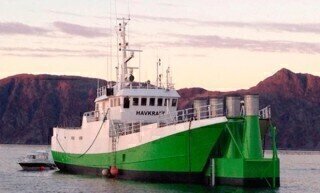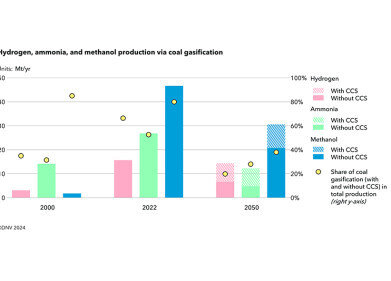Green Energy
You’ve Heard of Wave Power… This is Old Boat Power!
Mar 16 2015
With the EU putting more and more pressure on its member states to make their energy production methods renewable, innovative ways are being explored to harness the power of the Earth. Solar power has become increasingly cheap to capture in recent years, while wind farms have been around for a long time. Wave power, on the other hand, has more potential than both combined but is currently utilised less, due to more difficult implementation conditions and reduced funding.
However, perhaps the tide is turning (sorry for the pun!). A couple of years ago, marine-focused energy firm Sea Wave Energy Limited, from the UK, delivered unprecedented results with an experimental wave device in terms of efficiency and cost. Meanwhile, renewable pioneers such as Alvin Smith have endeavoured to bring the power of the sea to us, thus eliminating the significant obstacle of its harsh and hostile environment. Such developments have led many people to ask the question: Could Waves Power Britain?
A Norwegian Solution
Meanwhile, across the North Sea, one company has taken a novel approach to the problem. Kvernevik Engineering AS, headed by Edgar Kvernevik, have been working in tandem with Havkraft AS to install a hydro-energy power plant in an abandoned vessel.
The simplicity of the idea is what makes it so beautiful. The vessel is firmly anchored off-shore in the direction of oncoming waves. Inside its hull, four chambers of varying sizes have been created, which allow the flow of water into them. As the water enters, it affects the air pressure in the room, which in turn activates a turbine above sea level. In the words of Kvernevik, “it works almost like a bicycle pump”.
The fact that the only moving parts – those in the turbine – are above the ocean’s surface means that there is no danger of corrosion, damage or malfunction due to the saltiness of the water. Furthermore, by having the vessel permanently positioned in the path of the waves, the plant is not dependent on weather conditions.
A New Twist on an Old Idea
The “bike-pump-principle” is a well-established method of harnessing wave power and is more formally known as a fluctuating water column (for information on other ways we can glean energy from the sea, see the article 3 Amazing Ways to Harvest Clean Energy from Oceans). However, such a technique has never been employed in an old fishing vessel before… and this is just the beginning.
“We see this project as a three-stage rocket”, explained Kvernevik, who eventually hopes to expand the operation into a massive wave and wind farm.
“The first stage is to test the model we have just built to make sure that electricity generation can be carried out as planned. Next, a hydrogen production plant will be installed on board the vessel so that the electricity generated can be stored in the form of hydrogen gas,” he said. ““The plan is then to construct a plant with a nominal capacity of 1000kW (1MW). We will do this by installing five production modules similar to the current plant either on a larger vessel or a custom-built barge. Finally, we will build a semi-submersible platform designed to carry a 4MW wave power plant with a 6MW wind turbine installed on top.”
If successful, the ambitious project will be capable of generating significant renewable power for the country and could help Norway achieve its aim of 67.5% of energy produced from renewables by 2020… and perhaps Britain could learn a few lessons from its innovative counterpart.
Image: sintef
Events
May 05 2024 Seville, Spain
May 13 2024 Munich, Germany
May 23 2024 Beijing, China
May 23 2024 Beijing, China
Jun 10 2024 Algiers, Algeria














